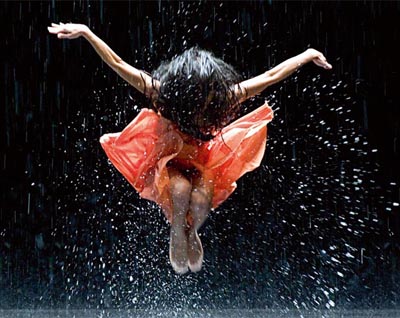 Pina Bausch was one of my heroes. Most of my life I tracked her conceptual innovations in choreography, and the creation of her Tanztheater company in Wuppertal Germany. Moving dance beyond the lexicons of ballet and even Graham’s modern dance tropes, Bausch used the body to explore the archetypes of animality. Her “dances” are in fact small narratives, riddles, myths and gems of erotic psychoanalysis. In the process she created nothing less than a poetics of pain.
Pina Bausch was one of my heroes. Most of my life I tracked her conceptual innovations in choreography, and the creation of her Tanztheater company in Wuppertal Germany. Moving dance beyond the lexicons of ballet and even Graham’s modern dance tropes, Bausch used the body to explore the archetypes of animality. Her “dances” are in fact small narratives, riddles, myths and gems of erotic psychoanalysis. In the process she created nothing less than a poetics of pain.
In her pieces, at once expressionist, avant garde, and laced with angular angst, Bausch transformed dance into an emotional incantation in which longing and long-limbed velocity were employed to invoke something like redemption. Dance as kinetic cosmology, Dada laced with danger.
In progress for at least a year before its filming last year in digital 3D, Pina became a sorrowful labor of love by filmmaker Wim Wenders and Bausch’s dancers. The choreographer died suddenly before the 3D camerawork was to begin. And after a period of grieving, the dancers and Wenders went ahead filming (deeply, madly, passionately) an astonishing series of excerpts and solos from her major works.
From the stupendous Rites of Spring opening, in which groups of men and women tear voluptuously through each other on a stage covered with soft dirt, to a final long section of Vollmond, in which an on-stage waterfall rains upon the dancers’ bodies like god’s tears, this film obliterates any stereotype of what dance is supposed to look like, and reaches deep into some archetypal reservoir.
I was breathless for an hour and a half watching necks weep, feet scold, shoulders sculpt new meanings out of repeated gestures. The vocabulary of movement here is almost extraterrestrial, as are the abilities of these elegantly ripped bodies.
It is all about the pain of being alive, the Sisyphusian struggle that inevitably leads to simply more struggle. The pain visible in faces, hands and hips, however, is all about her dancers’ loss— about Pina, the thin, wraithlike choreographer who lives in their bodies and their impossible gestures. Or perhaps the dark-haired choreographer continues to use these astonishing anatomies to unleash her poetry upon our eyes and hearts.
Redemption sought, the longing for connection, the electric thrill of bonding with air, earth, and water—the Pina Bausch I never got to see in person was up there on that screen, taking me into a realm I recognize from recurring dreams.
What Wenders’ intimate camerawork reveals is jaw-dropping movement, yet not in any flashy “how can they possibly do that?” way. The sheer daring of the moves, the courage of dancers to throw themselves into unseen spaces and relationships—the rippling dialogue of elbows, hands, jaws and feet is just about untranslatable into words.
“Dance”—Bausch admonished us—”or else you are lost.”
Pina is still at the Del Mar for a little while longer. Go and remind yourself what we are capable of.


“Dance or else you are lost” could be my mantra, but I’ll admit to not knowing about this dancer.
I saw the coming attraction excerpts of this movie at Aptos Cinema when I was there to see The Descendants last Sunday. Love your descriptions and can’t wait to see it!
Nice review, Christina. I loved this film. And yes, it cannot be described with words. It’s a perfect example of why dance expresses what words cannot say.